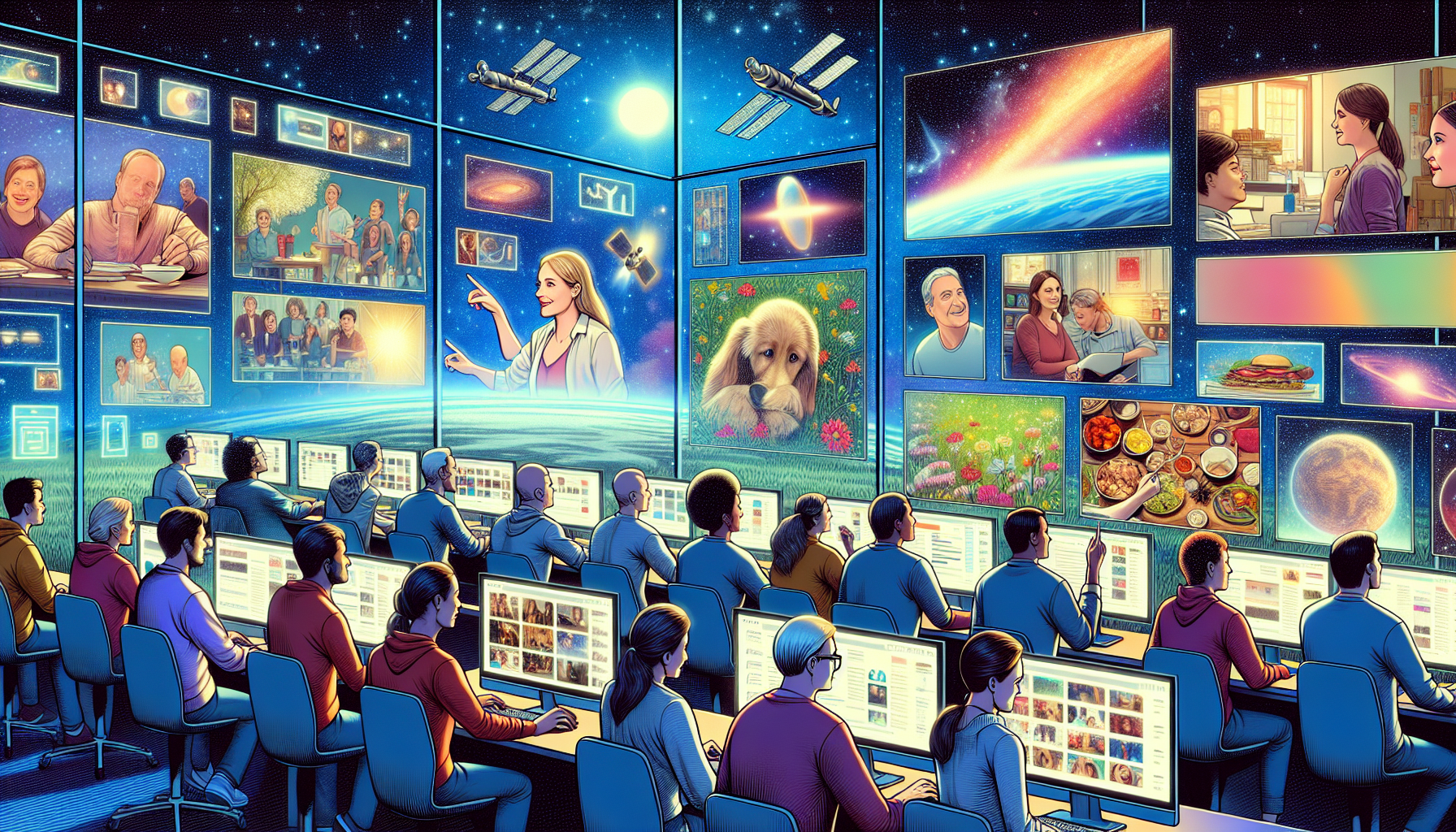 ## NVIDIA’s Contentious AI Training Methods: An In-Depth Analysis
## NVIDIA’s Contentious AI Training Methods: An In-Depth Analysis
A recent disclosure that has caused a stir in the tech sector reveals that NVIDIA, a $2.4 trillion entity, stands accused of harvesting copyrighted material for AI training purposes. This practice has ignited substantial ethical and legal dilemmas, drawing attention to larger concerns related to the swift advancement of artificial intelligence technologies.
The Charges Against NVIDIA
Reports suggest that NVIDIA directed its staff to obtain videos from platforms such as YouTube and Netflix to create commercial AI initiatives. These initiatives encompass the Omniverse 3D world generator, autonomous vehicle systems, and “digital human” projects. The company defended its practices by asserting that their research adheres to copyright regulations, which safeguard particular expressions but not facts, concepts, data, or information.
YouTube’s Position on AI Training
YouTube has firmly opposed the use of its content for AI training without explicit permission. Neal Mohan, the CEO of YouTube, remarked that employing YouTube videos to train AI models constitutes a “clear violation” of the platform’s terms. This stance was reaffirmed following reports that various other companies, including OpenAI and Runway AI, had similarly utilized YouTube videos for AI training without authorization.
Internal Issues and Leadership Decisions
Inside NVIDIA, staff members voiced ethical and legal apprehensions surrounding the practice. Nevertheless, these worries were reportedly overlooked by upper management, with Ming-Yu Liu, NVIDIA’s vice president of research, indicating that the decision had received endorsement from the highest levels. This approach resembles the “move fast and break things” mentality famously embraced by Facebook (now Meta), which has frequently resulted in considerable privacy infringements and assorted problems.
The Extent of Data Scraping
NVIDIA’s data scraping initiatives reach beyond YouTube and Netflix. The company also directed employees to utilize datasets from sources like MovieNet, proprietary video game footage libraries, and GitHub video datasets including WebVid and InternVid-10M. Some of these datasets were designated for academic purposes only, but NVIDIA reportedly disregarded these limitations, asserting that the data was legitimate for commercial AI use.
Evasion Strategies
To evade detection and possible bans from YouTube, NVIDIA personnel employed virtual machines (VMs) with changing IP addresses. This strategy enabled them to download content without attracting attention. The use of Amazon Web Services (AWS) to reboot VM instances and acquire fresh public IP addresses was also cited as a method to bypass restrictions.
Ethical and Legal Consequences
The disclosures surrounding NVIDIA’s practices have triggered a broader dialogue regarding the ethical and legal ramifications of leveraging copyrighted content for AI training. While the company insists on compliance with copyright laws, the employed methods and the dismissal of internal concerns provoke questions about the conscientious development and implementation of AI technologies.
Conclusion
NVIDIA’s contentious AI training practices underscore the intricate and often unclear intersection of technology, ethics, and law. As AI continues to progress, it becomes imperative for businesses to address these challenges judiciously, guaranteeing that innovation does not compromise ethical benchmarks and legal adherence.
Q&A Session
Q1: What is the primary controversy linked to NVIDIA’s AI training methods?
A1: The primary controversy involves allegations that NVIDIA improperly scraped copyrighted content from platforms like YouTube and Netflix for AI model training, raising significant ethical and legal issues.
Q2: How did YouTube respond to the allegations against NVIDIA?
A2: YouTube’s CEO, Neal Mohan, declared that the unauthorized use of YouTube videos for AI training constitutes a “clear violation” of the platform’s terms, reinforcing the company’s position against such actions.
Q3: What internal issues were raised by NVIDIA employees?
A3: NVIDIA employees expressed ethical and legal concerns regarding the scraping of copyrighted content. However, these apprehensions were reportedly dismissed by upper management, who claimed the decision was approved at the highest levels.
Q4: What additional datasets did NVIDIA utilize for AI training?
A4: Besides YouTube and Netflix videos, NVIDIA accessed datasets from sources like MovieNet, proprietary libraries of video game footage, and GitHub video datasets such as WebVid and InternVid-10M.
Q5: How did NVIDIA avoid detection while scraping content?
A5: NVIDIA staff employed virtual machines (VMs) with rotating IP addresses to remain undetected and prevent potential bans from YouTube. They also utilized Amazon Web Services (AWS) to reboot VM instances and obtain new public IP addresses.
Q6: What are the wider implications of NVIDIA’s practices?
A6: The wider implications encompass ethical and legal challenges in the creation and application of AI technologies. The controversy emphasizes the necessity for responsible practices that align with legal standards and ethical principles.